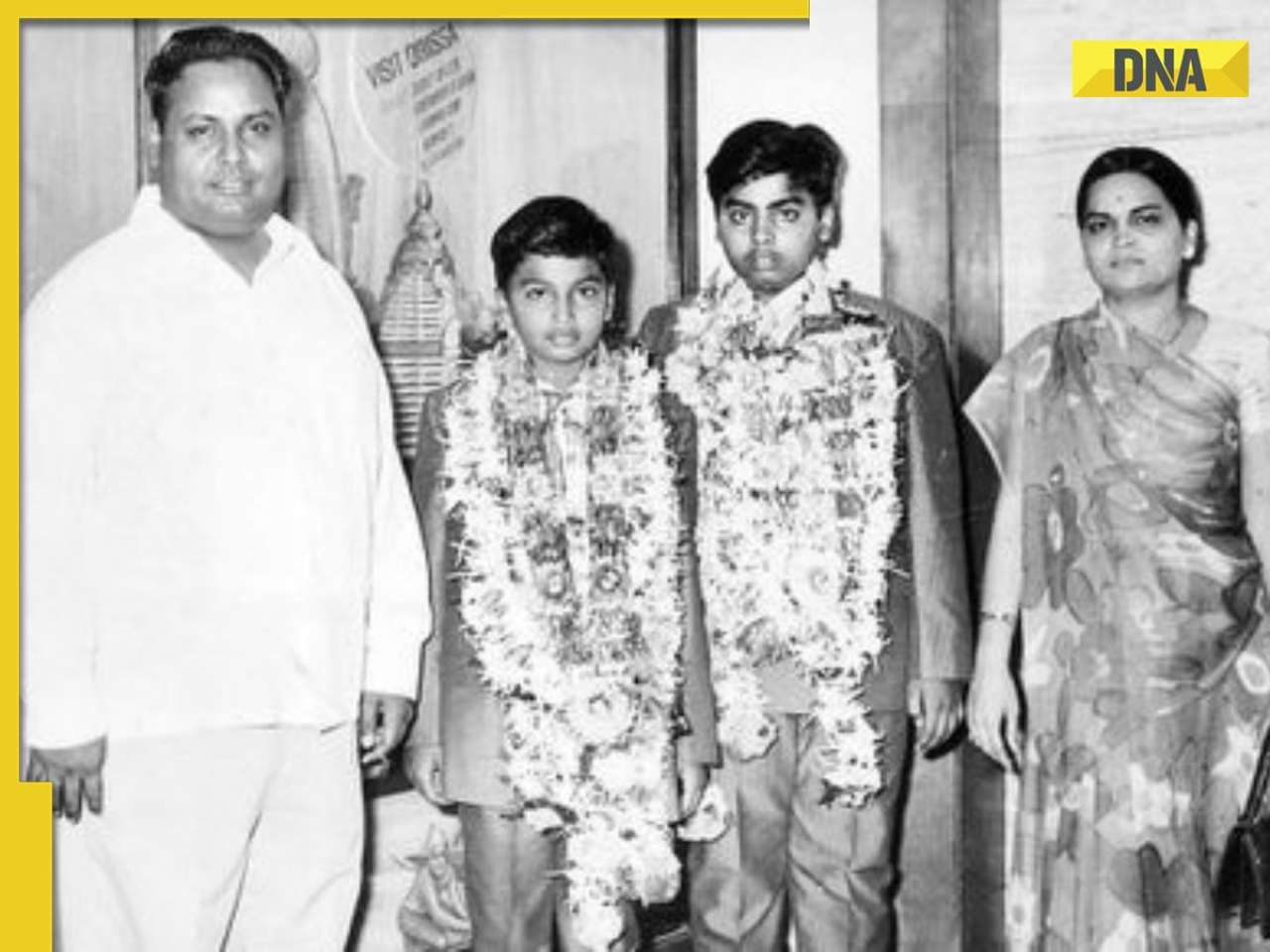- LATEST
- WEBSTORY
- TRENDING
BUSINESS
When men think about attractive women, they intend to spend more money: Geoffrey Miller
'Consumerism has deep roots in evolution,' says Geoffrey Miller, a professor of evolutionary psychology at the University of New Mexico in the US.
TRENDING NOW
“Consumerism has deep roots in evolution,” says Geoffrey Miller, a professor of evolutionary psychology at the University of New Mexico in the US. “Why would the world’s most intelligent primate buy a Hummer H1 Alpha sport utility vehicle for $139,771? It is not a practical mode of transport. It seats only four, needs 51 feet in which to turn around, burns a gallon of gas every 10 miles, dawdles from 0 to 60mph in 13.5 seconds, and has poor reliability.
"Yet, some people feel the need to buy it. Biology offers an answer. Humans evolved in small social groups in which image and status were all-important, not only for survival but for attracting mates, impressing friends, and rearing children. Many products are signals first and material objects later,” he explains.
Miller has most recently authored Spent — Sex, Evolution, And Consumer Behaviour. Excerpts from an exclusive interview with DNA:
One of the main points you make in the book is that 'consumerism is an evolutionary concept'. Can you explain that to our readers?
Conspicuous consumption can be found throughout nature. Almost all animals show off in some way. Offspring display their fitness to parents, to solicit food and care; males and females display to each other to attract mates. Other animals don’t show off their wealth, but they do show off the quality of their genes, bodies, and brains through traits such as the peacock’s tail, the bowerbird’s bower, or the nightingale’s song. When humans buy the most expensive and impressive consumer goods that they can afford — such as the Tata Indigo Marina rather than the Tata Nano — they are doing the same kind of showing off.
So, consumerism has deep roots in evolution. Here’s another one: Why would the world’s most intelligent primate buy a Hummer H1 Alpha sport utility vehicle for $139,771? It is not a practical mode of transport. It seats only four, needs 51 feet in which to turn around, burns a gallon of gas every ten miles, dawdles from 0 to 60mph in 13.5 seconds and has poor reliability. Yet, some people feel the need to buy it.
Biology offers an answer. Humans evolved in small social groups in which image and status were all-important, not only for survival but for attracting mates, impressing friends, and rearing children. Many products are products are signals first and material objects later.
You write “men increase the conspicuousness of consumption
when they are most interested in mating.” Why do you say that? Why does it not affect women in the same way as men?
We have done some experiments showing that when men think about attractive women, they intend to spend more money on conspicuous goods (expensive cars, watches, or foreign holidays) than on inconspicuous goods (washing machines, shampoo, headache medicine). Whereas when women think about attractive men, they intend to spend more time on conspicuous charity (volunteering to help the poor or sick) rather than on inconspicuous altruism (picking up trash when no one else is looking, conserving water when bathing).
So it looks like men are instinctively displaying their wealth more, while women are displaying their kindness more. In fact, many recent studies have confirmed that men increase the conspicuousness of their consumption when they are most interested in mating.
One of your central claims is that we buy many products in a semi-conscious attempt to increase the social and sexual attractiveness of certain personal traits. Why do you say that?
When we first meet people, our physical appearance is most obvious, so we try hard to wear nice clothing, jewellery, and cosmetics. The whole cosmetics business is focused on helping women appear younger, more fertile, healthier, and thus better able to bear offspring. The evolutionary background of cosmetics is that in most primate species, sexual selection focuses very heavily on facial appearance. In assessing women’s ages, men apparently evolved to pay close attention to facial and bodily cues of ebing in the young-adult phase of peak fertility. So women could evolve to fake their fertility all the way from around age 12 to around age around age 60 — not just physically, but behaviourly.
For instance when Bill Clinton had an affair with Monica Lewinsky in 1995, Monica (born 1973) was twenty-two, near peak-fertility, whereas Bill’s wife, Hillary Clinton (born 1947), was forty-eight, with negligible fertility. One way of faking fertility across a broader age range is to apply cosmetics that amplify facial fertility cues that peak in young adulthood, such as plump lips, large eyes, prominent cheekbones, smooth and radiant complexion, thick and glossy head hair, and minimal facial hair. But once we meet people, we start judging their intelligence, personality traits, and moral virtues.
Are they bright? Kind? Faithful? To advertise these kinds of traits, we are unconsciously driven to acquire certain goods and services that are hard-to-fake signals of these traits — such as a degree from an Indian Institute of Technology (to display intelligence), a donation to the Wildlife Trust (to show kindness to animals).
“Like chivalrous lovers, the best marketing-oriented companies help discover desires we never knew he had, and ways of fulfilling them we never imagined,” you write. What do you mean by that?
Marketing is about finding ways to profit in business by adding psychological value to products rather than physical value. If a business person can make a product work better as a display of a consumer’s traits, the consumer will pay more for it. For example, drinking tap water is not very good at showing anything special about someone. But it you drink ‘Glaceau SmartWater’ (a premium brand of bottled water), then you are demonstrating that you have extra money (it costs more), a slight understanding of French (Glaceau means glacier, and signifies clean, pure, cold water), and higher intelligence (because you drink ‘smart’ water).
So, when Coca Cola acquired that SmartWater brand a few years ago, it was recognising the benefits for water-drinkers of signalling these traits, rather than just quenching their thirst.
One of the points you make is that creation of culture is essentially dominated by six media conglomerates and four advertising holding companies. Can you explain that?
I argue that most successful ideas are imposed top down by marketing in the interests of certain powerful individuals, groups, and institutions. It seemed clear that the most successful ideas — religions, political ideologies, languages, cultural norms, technologies — have been disseminated by churches, states, school systems and corporations with immense wealth and power. Even the proliferation of ordinary memes such as the buzz about films, new social and political issues, countries to fear this year, is dominated by six big global media conglomerates: TimeWarner, Disney, News Corp, Vivendi Universal, Bertelsmann and Viacom. These conglomerates relentlessly cross-promote their TV channels, films, magazines, and books through all available media.
For example, if TimeWarner owned Warner Bros releases a big-budget film such as The Dark Knight, it will typically be featured on the covers of Time and People magazines, reviewed favourably by CNN, and well-advertised on AOL. Of course, TimeWarner owns Time and People magazines, the TV channel CNN, and the website AOL. This is not conspiracy theory; it’s just good business sense and standard operating procedure. Apart from these big six media conglomerates, there are four big advertising holding companies: Omnicon, WPP, Interpublic and Publicis.
“Consumerism depends on forgetting the truth and believing a falsehood,” you write. Why do you say that?
The truth that must be forgotten is that we humans have already spent millions of years evolving awesome effective ways to display our mental and moral traits to one another through natural social behaviours such as language, art, music, generosity, creativity, and ideology. Consumerism actually promotes a big lie that above-average products can compensate for below-average traits when one is trying to build serious long-term relationships with mates, friends or family. True, some products can mask personal defects in the short term.
For a 47-year-old single woman seeking mates, Botox can paralyze facial muscles to reduce wrinkles, hiding some signs of age. The treatment might lead a 31-year-old single man to ask her for a second date, which he might not have done had her true age been more apparent during a candlelit first date. However, that age will become apparent sooner or later. A second big lie that consumerism promotes is that products offer cooler, more impressive ways to display our desirable traits than any natural behaviour could provide.
Take the case of recent ad for L’Oreal lipstick called the Glam Shine Dazzling Plumping Lipcolour. It touted its “unique micro-crystal technology” and claimed that its “moisture-drenched formula with non-sticky texture delivers full, healthy lips with dazzling dimension and incredible shine.” This breathless techno-sensusalism could be rendered honestly as: “This lipstick will signal your libidinous desperation and imminent ovulation not only to your sexually jaded husband and teenage children, but to your male neighbours and household servants.” We’re seldom honest with ourselves about why we buy things, and advertising euphemisms don’t help.
What is the signalling theory and how does it impact advertising?
If you want to make a decent profit, your product must have a special signalling value beyond its nominal function. If a product appeals to everyone, it cannot signal anything about the consumer, so consumers will simply comparison to shop for it on the basis of features and/or price. Let me give you an example. De Beers has recently begun advertising diamond rings for single professional women, by trying to introduce a new social convention: whereas traditional engagement rings are for the left hand, these single-woman rings are “right-hand rings.” At first, this sounds great: men buy diamond rings for their fiancès when they got engaged, but today there are many wealthy women who are not engaged, and who might nonetheless like a diamond ring.
However, signalling theory suggests this campaign may be counterproductive. If unengaged women start buying themselves diamonds rings and observers don’t bother distinguishing right from left ring-fingers, then diamond rings will no longer display that a loving man has spent two months’ salary on a woman. The diamond’s signalling power will evaporate.
Why does a brand like BMW sometimes advertise in mass circulation magazines given that it’s an inefficient way of reaching its target customers?
What we need to understand is that all ads effectively have two audiences: potential product buyers, and potential product viewers who will credit the product owners with various desirable traits. The more expensive and exclusive the product, the more the latter will outnumber the former. Thus, most BMW ads are not really aimed so much at potential BMW buyers as they are at potential BMW coveters, to induce respect for the tiny minority who can afford the cars. This explains why BMW sometimes advertises in mass circulation magazines: it is an inefficient to reach their target market of potential BMW buyers, but it is a very efficient way to reach the BMW coveters who might respect the BMW buyers.
What is feature creep? How does it help marketers?
Even products that used to be simple have now acquired such complex features that they have become reliable intelligence indicators. This is feature creep. This is driven partly by the need to make each new product model different from last year’s, but also partly by the consumer’s unconscious desire for a product that is right at the limit of his cognitive ability, and one that therefore functions as a credible cognitive display. Consider sewing machines. The iconic Singer Class 201 machines that were made between the late 1930s and the 1950s were hefty black metal appliances with a couple of dozen moving parts and a variable-speed pedal switch.
By contrast, the recent Janome Memory Craft 111000 sewing machine ($7,500 MSRP) is basically a computerised desktop sewing robot controlled by a 7.5 inch VGA touchscreen. It includes two USB ports for downloading .JEF format embroidery designs from a home PC, which it can then copy, paste, flip, rescale, and rotate using up to one gigabyte of onboard memory, before it sews them up at eight hundred stitches per minute across surfaces up to 8’’ to 11’’. Although easy and intuitive to use for basic sewing tasks, it would take an extraordinary mind to fully exploit its capabilities.
You write “more subtly, the iPod and the BMW 500i both contain the letter i to suggest the intelligence of their users.” How does that help?
Marketers more often than not confuse intelligence with wealth, status, taste, class, or education, and don’t understand the distinctive product attributes that bright consumers actually seek to display through their brightness. Marketing types don’t understand that tech savvy males unconsciously respond to product technical specifications not as useful features they’d enjoy, but as impressive properties that they’ll be able to talk about in impressively articulately, IQ displaying ways. The iPod provides an opportunity to explain the meaning of “160 GB” and “MPEG-4”, assuming of course, you know what these mean. The BMW 550i provides an opportunity to display one’s mastery of the cortex-sapping iDrive system and the built-in iPod and iPhone docks, and to explain the meaning of “double VANOS steplessly variable valve timing.”
The male buying them, thinks those features can be talked about in ways that will display my general intelligence to potential mates and friends, who will bow down before my godlike techno-powers, which rival those of Iron Man himself.








)
)
)
)
)
)
)
)
)
)
)
)
)
)
)





























































